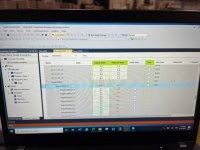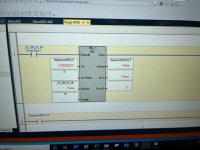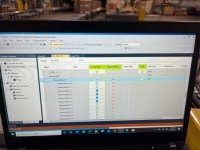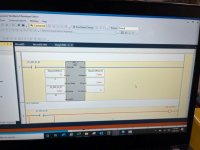Fraser
Member
I’m working on a conveyor project for work. We’re trying to install a few diverts to carry product directly to one of two trailer doors. I have some PLC experience but it’s limited. I’m trying to teach myself how to use a Bit Shift Left/Right instruction on CCW since it will be required to sequence the boxes to the two diverts. I had the BSL instruction working on a test program I created to learn the instruction but I’ve hit a wall when trying to use that instruction once I add it to the program I’m writing for the conveyor and uploading it to the actual controller. For some reason the instruction works differently on the controller even though as near as I can tell I’ve set them up exactly the same.
On the simulator when I execute the instruction it seems to add a bool bit to the array (represented by a check mark) and it moves down the array as I continue to go high and low on the execute input. This is what I expect it to do. However when I do the same thing on the controller using photo eyes to trigger the instruction it gives me a significantly higher numeric value on the sequence bit address (SequenceBSL[1]). No bool bit populates the array and moves down the array as I continue to execute. I’m not sure what the numeric value represents in the SequenceBSL[1] address. I suspect the issue has something do with that but I haven’t been able to figure out how to resolve it. I’ve uploaded some pics of the instructions for the controller and simulator programs to show the difference. Any guidance on this issue would be appreciated. Thanks.




On the simulator when I execute the instruction it seems to add a bool bit to the array (represented by a check mark) and it moves down the array as I continue to go high and low on the execute input. This is what I expect it to do. However when I do the same thing on the controller using photo eyes to trigger the instruction it gives me a significantly higher numeric value on the sequence bit address (SequenceBSL[1]). No bool bit populates the array and moves down the array as I continue to execute. I’m not sure what the numeric value represents in the SequenceBSL[1] address. I suspect the issue has something do with that but I haven’t been able to figure out how to resolve it. I’ve uploaded some pics of the instructions for the controller and simulator programs to show the difference. Any guidance on this issue would be appreciated. Thanks.







